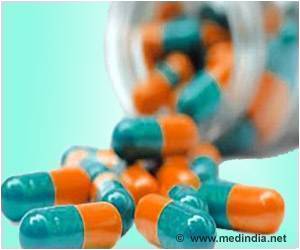The first oxygen-sensitive toxin antitoxin system has been identified by researchers.

‘Compounds that attack bacteria's ability to go dormant are being studied by researchers. They have found the first oxygen-sensitive toxin antitoxin system.’





Thomas K. Wood, professor of chemical engineering and holder of the Biotechnology Endowed Chair, Penn State, said, "But, environmental stress factors often turn on a bacterial mechanism that creates a toxin that makes the cell dormant and therefore antibiotic resistant."
Bacteria that form biofilms are often difficult to kill. They can react to environmental signals and produce a toxin that makes the cells go dormant.
Antibiotics cannot target dormant cells. One type of bacterium that does this lives in the gastrointestinal track. Bile, secreted by the liver and stored in the gall bladder, when released into the GI track can kill bacteria. In the presence of bile, these bacteria produce a protein that is a self-toxin and the bacteria go dormant.
When the bile is gone, the bacteria produce another protein that destroys the inhibitor protein and the bacteria come alive. These toxin antitoxin systems are inherent in bacteria and serve to protect them against a variety of external, environmental insults. Wood and his colleagues characterized the first toxin antitoxin system in a biofilm.
They report in Nature Communications that this system also is the first known to be oxygen-dependent.
Advertisement
"If we understand the toxin antitoxin systems at a molecular or atomic level, we can make better antimicrobials," said Wood. "I would argue that the toxin antitoxin systems are fundamental to the physiology of all bacteria. We hope this will give us insight into how they survive the antibiotics."
Advertisement
According to Wood, this is one of the reasons that TB patients need to stay on antibiotics for months or years to clear the body of all the bacteria.
Biofilms are involved in 80% of human infections and are one of the strongest contributors to the pressing antibiotic resistance problem. The researchers found that 10% oxygen is sufficient to wake up the bacteria, but in a biofilm, the problem becomes accessibility. The bacteria on the edges of the film can be easily exposed to oxygen, but those further inside the film might not come into contact with the oxygen.
The channels that form in the E. coli biofilm allow the oxygen to penetrate into the biofilm, awaken the bacteria, break up the biofilm and disperse it. The researchers suggest that this type of toxin, one that is oxygen-dependent, could become the target for antibacterial treatments to inhibit the formation of biofilms.
Source-Eurekalert











